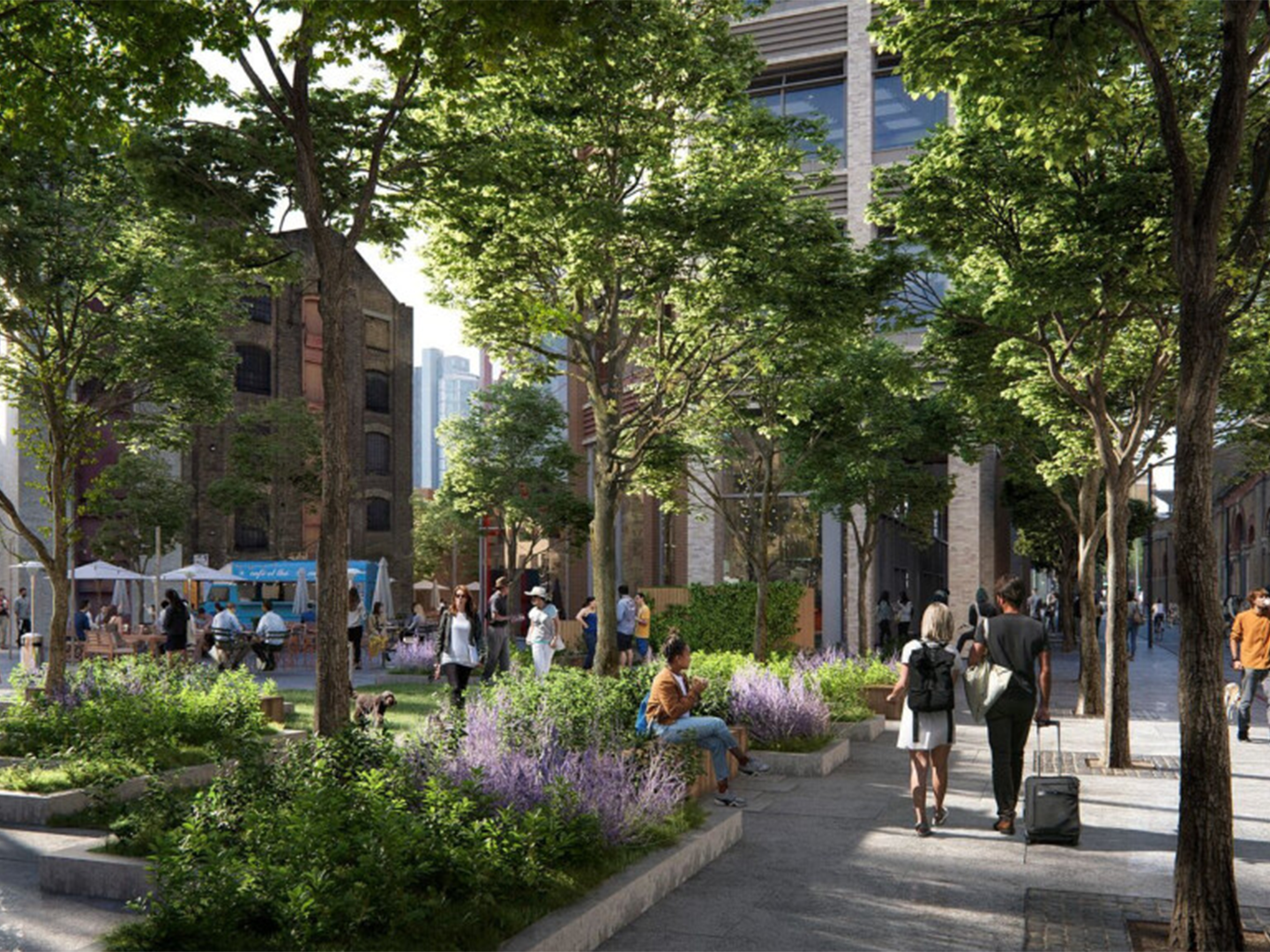New London Architecture
London and NY ‘optimistic’ on recovery
Friday 11 June 2021

©Busa Photography, Getty Images
London and New York face a ‘really big task’ to provide reasons for people to come back to their respective centres following the ravages of the pandemic. But a group of key thinkers from both cities said last week that they were optimistic that they will prosper, despite the concept of the CBD being now ‘dead’. That is, just so long as workplaces are reinvented as healthy, flexible, amenity-rich places that are high on collaboration and ‘quality of life’.
Those were some of the key thoughts to emerge from last week’s NYLON session – the latest in a series of regular events linking New York and London to debate built environment issues, run by NLA. The session looked at workplaces in the light of the publication of WRK/LDN, Benjamin Prosky of the Centre for Architecture AIA NY kicking off by suggesting that lessons needed to be learned from the COVID period’s effects on the office.
‘There’s this fear that we will let this moment pass’, he said. ‘That muscle memory will just kick back in’.
KPF’s Marianne Kwok said it was hard to talk about the urban realm without talking about office space and that the period just gone had allowed practices like hers to take the opportunity to assess issues in a more ‘intense’ way. Nick Gaskell of Hawkins\Brown suggested that the era of presenteeism was over, (‘and good riddance’), with his work on schemes like Here East informing his view that some buildings are perfect for reinvention with different workspace scales and typologies, and a concentration on ground floor, public uses. Gaskell added that the project had opened up the need to design fewer individual desks and workstations and more collaboration and amenity spaces and ‘neighbourhoods’ in interiors. Moreover, a trend toward decentralisation had meant that Hawkins\Brown is now working on a number of out-of-town business parks as healthy places in which to work. ‘We can no longer get away just doing things that are just okay’, he said. ‘It has to be something truly special to get over any potential inertia’.
Richard Cook of New York-based COOKFOX Architects stressed the importance of outdoor spaces and biophilia in building designs. ‘Connecting with nature literally lowers your cortisol levels, lowers your stress response’.
People are wanting workplaces which concentrate on health and wellbeing and are looking to feel connected, he added, in authentic places which are amenities-rich. ‘The genius of human beings is our ability to collaborate, cooperate, sometimes for great good, sometimes for great evil, but it’s our genius. We love getting together’. Schemes like the practice’s Googleplex for Oxford Properties in New York’s Hudson Square build ‘a responsibility to place’, he added.
Offices also need to ‘disconnect or divorce hierarchy from design’, said AECOM’s Kelly Bacon. ‘The idea that you will start in a cubicle and work your way up to an office just no longer works’, she said.
But for Nick Searl, whose Argent Related firm works on both sides of the Atlantic, there were key lessons to be learned from the pandemic about workspaces. ‘Quality of life is going to be the future of work’, he said, with transport being a major influencer on people’s desire to make that journey. Investment was necessary, and developers – and city planners – need to be able to provide the ‘other stuff’ that people go to work for, the mixed use environments beyond the office. ‘We have to maximise flexibility, and we have to make it extremely cost-effective for people to be able to adapt space, because needs are going to change.’
Searl added that with his project to build essentially a new town on the outskirts of London, Brent Cross Town, one of the key questions the developer had asked itself was to imagine what can’t be done on the internet. He added that density provides energy and creates community to environments, but that COVID has changed urban environments significantly. ‘The CBD is dead’, he said, ‘End. There is no such thing any more…everything is about mixing the uses.’
Ultimately, in what is in fact a ‘really encouraging time’, Cook was ‘an inherent optimist’ about the future of the office, as long as the new breed focuses on collaborative environments and moves on from the ‘spark’ COVID has provided to the evolution of the workplace. ‘I believe we are going to have better urban workplaces and we are going to have some optionality to work from our homes at the same time’, he said. ‘But at the end of the day, I think we’ve learned a lot and we must recommit to what makes our cities, beautiful and vibrant, and the centre for human collaboration.’
Related

Video
NYLON: Innovation in New York and London
Watch NYLON as we look at the impact of increasing innovation districts on the urban fabric of cities.
Watch video
Video
Resilient Cities: preparing for climate events in the UK
As an industry, how do we move beyond the reactive and adopt a proactive approach to tackling climate change?
Watch videoStay in touch
Upgrade your plan
Choose the right membership for your business
Billing type:
Standard
£150.00
/month
£1,695.00
/year

Make your business and team part of London's built environment community.
Standard (small business)
£60.00
/month
£695.00
/year

Make your business and team part of London's built environment community, at a discounted rate for small businesses (less than 10 employees)
Partner
£525.00
/month
£5,950.00
/year

Account managed membership to maximise your profiling opportunities across NLA's programme.
Borough Partner
£400.00
/month
£4,750.00
/year

Account managed membership to maximise profiling opportunities across NLA's programme.
View options for
Personal membership




